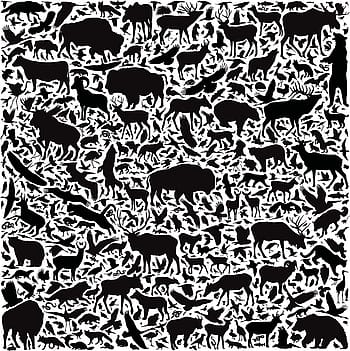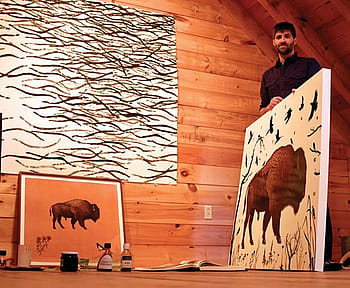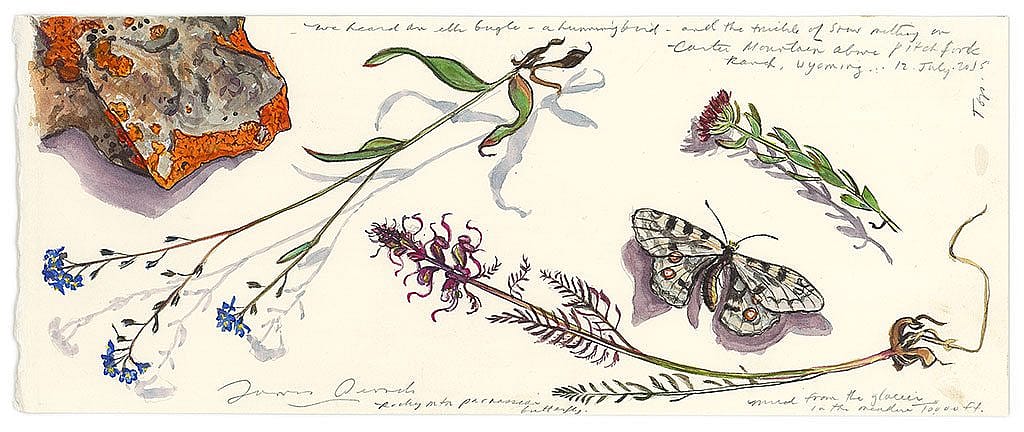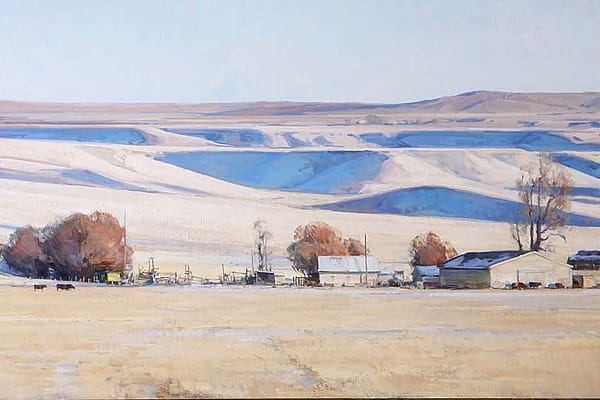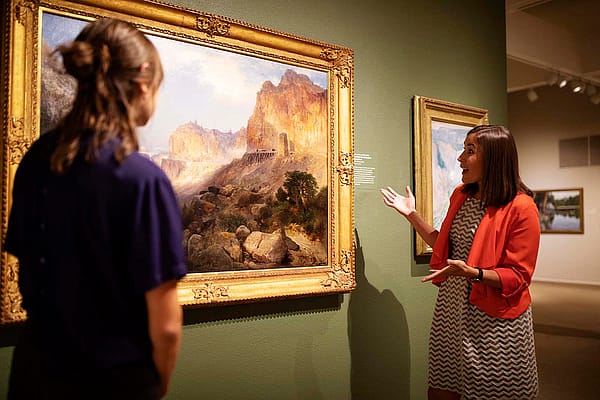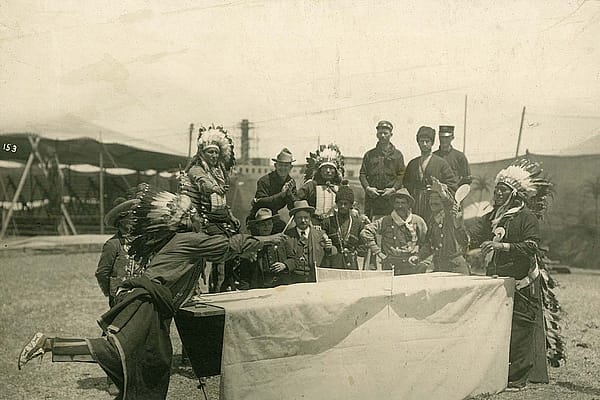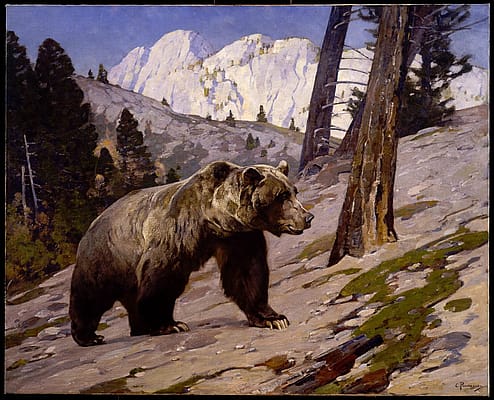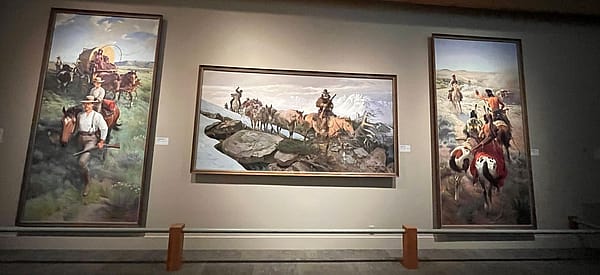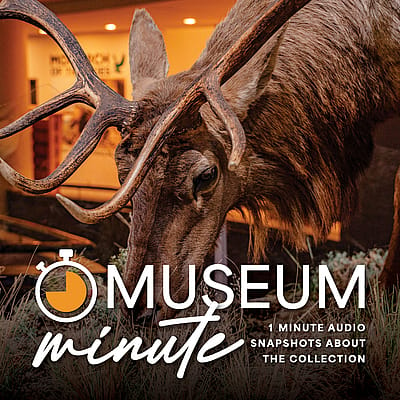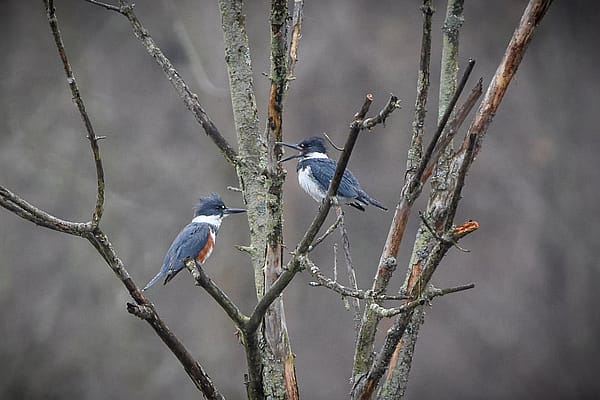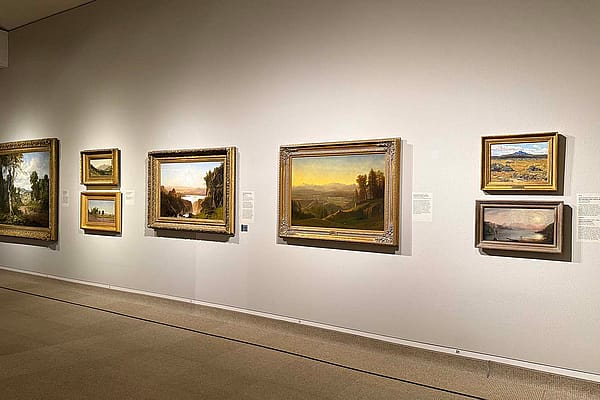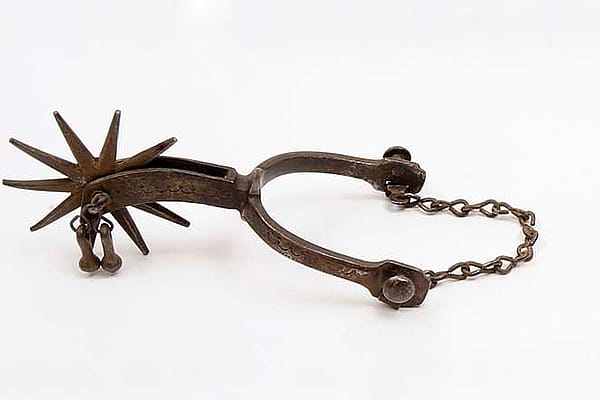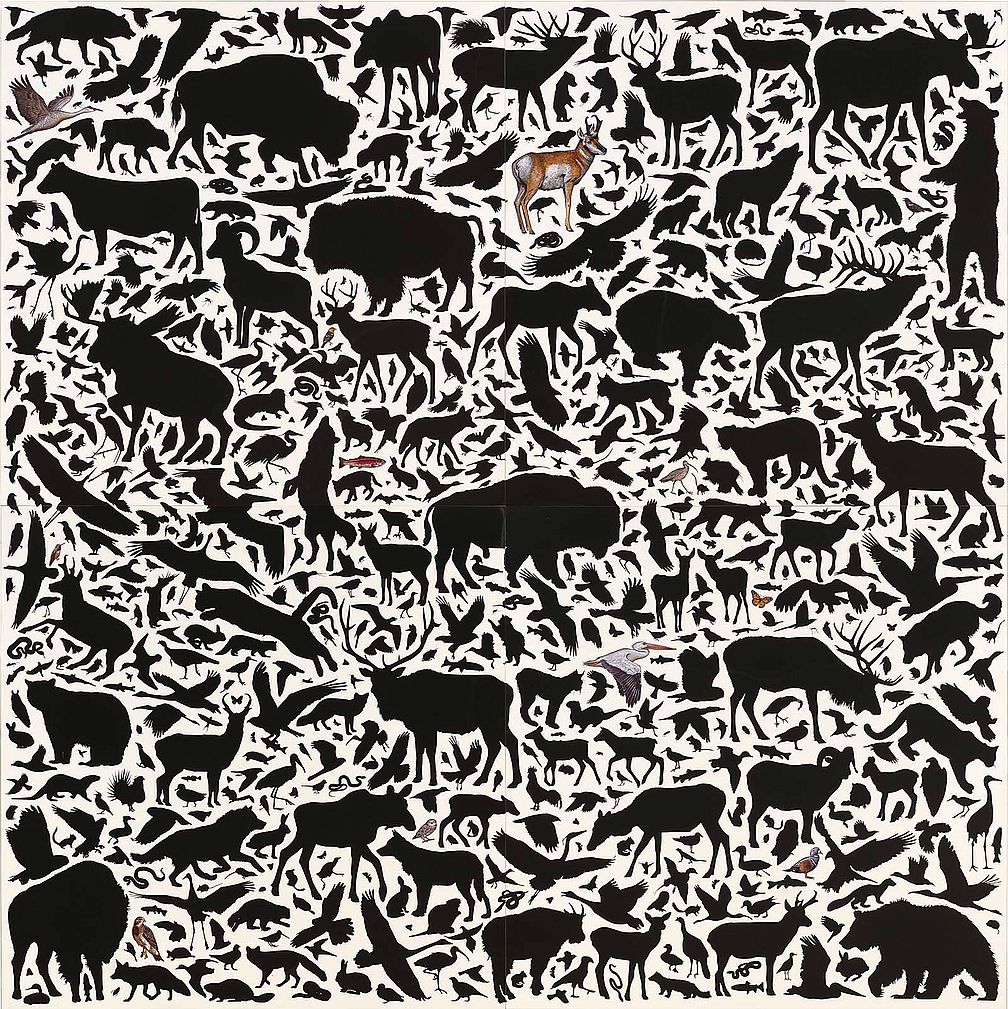
Yellowstone: Wilderness in a Box—The Art of James Prosek
Past Exhibition
Yellowstone: Wilderness in a Box
The Art of James Prosek
January 20–June 4, 2017
Cody Firearms Museum Breezeway
The special exhibition Yellowstone: Wilderness in a Box, showcased the work of internationally-renowned artist James Prosek. A major contributor to the Center’s 2016 exhibition Invisible Boundaries: Exploring Yellowstone’s Great Animal Migrations, Prosek’s pieces from that exhibition, regrouped and reinterpreted, appeared in a stand-alone exhibition in the Center’s Cody Firearms Museum Breezeway from January 20 through June 4, 2017.
Karen McWhorter, Curator of the Center’s Whitney Western Art Museum and this special exhibition, said, “Prosek’s paintings beautifully complemented the other components of Invisible Boundaries—photography, film, and biological research. He helped us see the ‘bigger picture’ and made the exhibition all the more resonant and relatable for our visitors. I’m glad for the opportunity to showcase his work on its own, too; we’re incredibly lucky to exhibit his art in Cody, Wyoming.”
Unless otherwise noted, all artwork is courtesy of the artist and SCHWARTZ • WAJAHAT, NEW YORK.
James Prosek reminds us that a whole constellation of migratory creatures experience unseen journeys, linking Yellowstone not only to nearby ranches but faraway oceans and foreign countries.
—Arthur Middleton
Yellowstone National Park’s nearly rectangular boundary was originally drawn to encompass geological and scenic wonders. The region’s biological wonders—especially its unique animals—are more difficult to confine. Some insects, birds, and mammals that call Yellowstone home for part of the year regularly migrate well beyond the park’s perimeter.
Artist and writer James Prosek tackles Yellowstone, its wildlife, and its man-made boundaries in a recent body of work. For the paintings and field sketches presented in Yellowstone: Wilderness in a Box, Prosek studied Yellowstone’s flora and fauna, paying special attention to elk and other animals that make long-distance migrations.
Prosek’s artwork calls into question our human desire to draw lines on the natural world. We create boundary lines on maps, and we name and categorize plants, animals, and minerals. In doing so, we attempt to create order from complexity and interconnectivity. Through his artwork, Prosek suggests that trying to contain nature—within park boundaries or by a name—denies the natural world’s hybridity and fluidity.
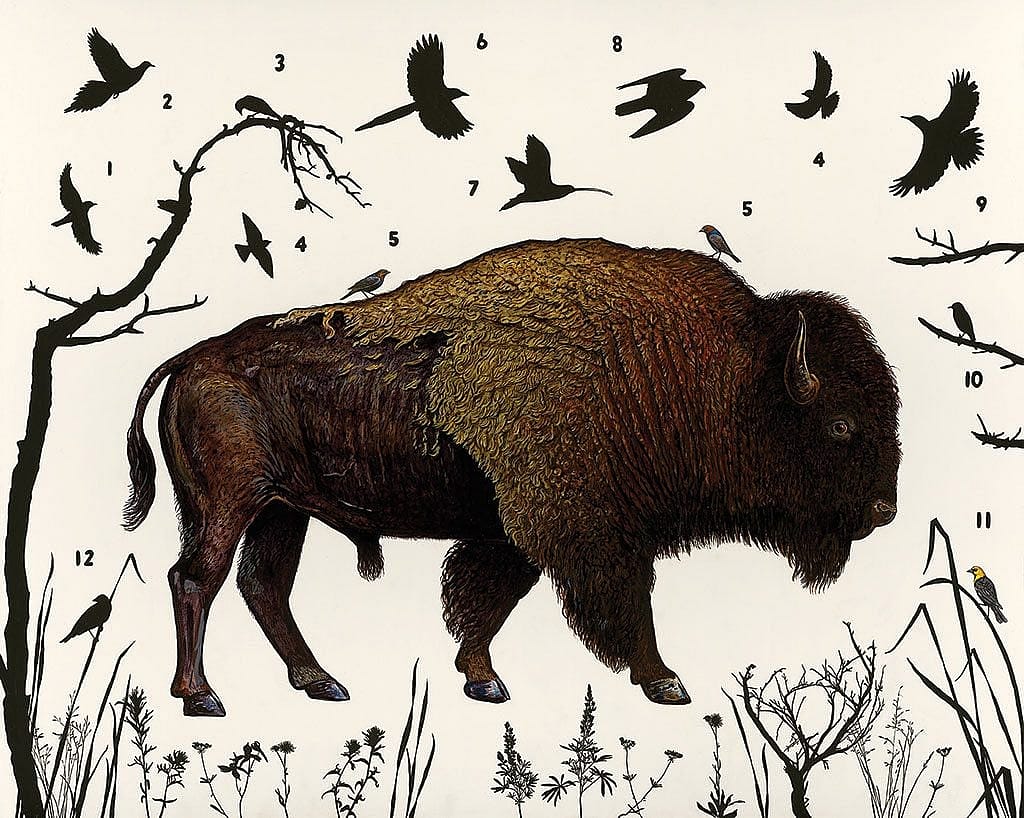
Can a single species be studied in isolation from the ecosystem of which it is a part? How do we choose what to name or not name, and how might this affect how we think about and act toward nature?”
—Karen McWhorter
The Yellowstone: Wilderness in a Box exhibition paired James Prosek’s paintings with several prints of John James Audubon’s work. McWhorter noted, “From an early age Prosek was inspired by Audubon and other wildlife illustrators, and popular field guides.”
She continued, “Prosek has also long been interested in the ideal behind the work of Audubon and his peers—the concept that the natural world can be neatly identified, catalogued, and known.”
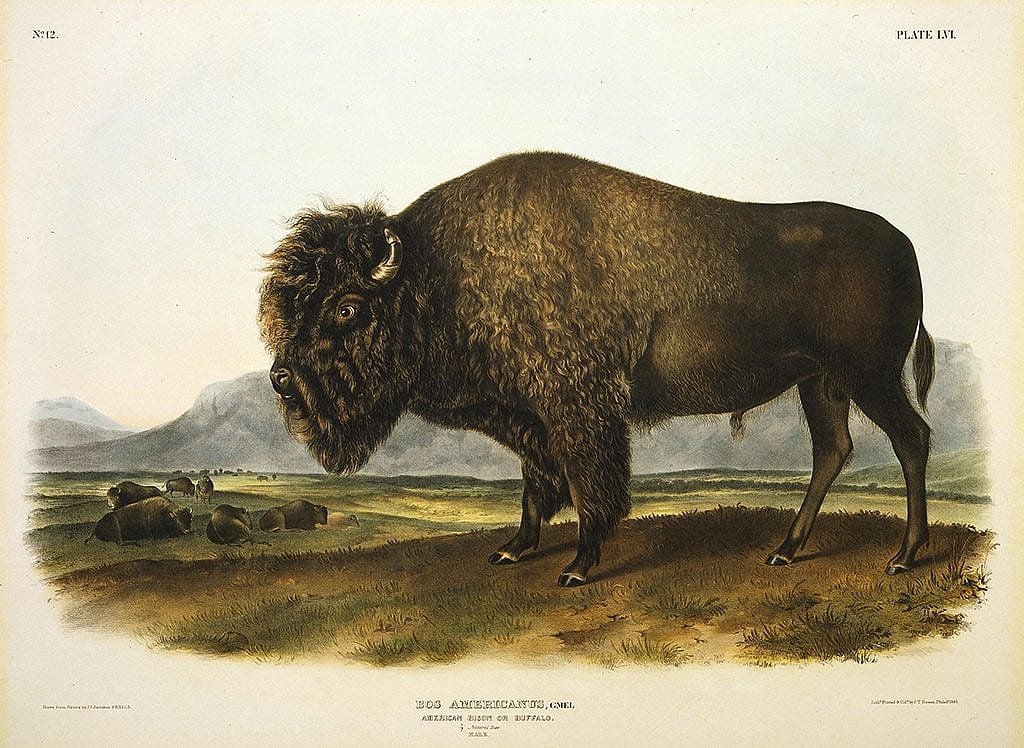
Audubon (1785–1851) is best known for his exquisite and detailed depictions of wildlife, especially the birds of North America. He had a lifelong curiosity about the natural world and an astonishing talent for drawing. He traveled extensively to study his wildlife subjects, and sketched from live and harvested specimens.
Audubon’s large-format images of birds and mammals collected in portfolios were wildly popular following their publication, and remain so today.
Prosek’s painting style and subject matter might resemble the work of the historical artist-naturalists like Audubon, but his message is more provocative. Although Prosek uses traditional painting techniques, he tackles contemporary issues. He carefully arranges his plant and animal subjects to explore the hierarchies and boundaries that humans create between things in nature.
“A close look reveals Prosek has a contemporary, critical approach,” says McWhorter. “He questions—subtly and sometimes not-so-subtly—our human desire to bring order to the wonderfully complex natural world.”
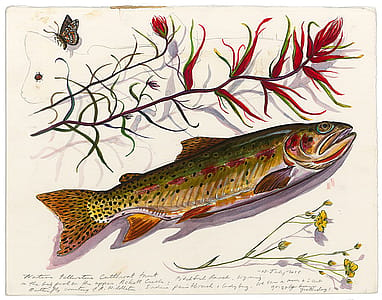
At times, Yellowstone can appear like a wilderness in a box, but then again, when you’re out on the land itself, filled with the scent of sage, the visual feastof a wildflower meadow, a trout holding in a thread of current, it is not in a box at all.
—James Prosek
Artists have long painted en plein air (in the open air) in order to depict their subjects with realism and immediacy. In the nineteenth century, Audubon famously worked outdoors to observe and sketch birds and other wildlife in their natural habitats.
Prosek’s artistic process is fundamentally informed by close, attentive observations of nature. His desire to study his subjects in person has taken him on journeys to remote and sometimes dangerous places across the globe and, for field sketch paintings in this exhibition, including the two shown here, to the Yellowstone backcountry.
Prosek draws on the traditional practices and aesthetic of artist-naturalists; he relies on in-person observation of flora and fauna, and carefully renders his subjects with striking realism.
—Karen McWhorter
Written By
Nancy McClure
Nancy now does Grants & Foundations Relations for the Center of the West's Development Department, but was formerly the Content Producer for the Center's Public Relations Department, where her work included writing and updating website content, publicizing events, copy editing, working with images, and producing the e-newsletter Western Wire. Her current job is seeking and applying for funding from government grants and private foundations. In her spare time, Nancy enjoys photography, reading, flower gardening, and playing the flute.
